Disclosure: This article contains affiliate links. We may earn a commission from purchases at no extra cost to you, which helps our travel content.
The capital of Laos greets visitors with a peculiar contradiction – it's one of Southeast Asia's sleepiest capitals yet simultaneously offers a transportation puzzle that can leave first-timers scratching their heads. When I first arrived in Vientiane after my astronomy conference in Bangkok, I was struck by how the city's languid pace contrasted with its somewhat chaotic transportation options. Unlike the well-marked transit systems of other Asian capitals, Vientiane presents a delightful hodgepodge of transport methods that reflect the city's colonial past and its present-day embrace of organized chaos. Having navigated celestial maps for years, I found myself applying similar observational techniques to decode Vientiane's transportation patterns – watching, noting, and identifying the recurring rhythms that locals seemed to intuitively understand. Whether you're planning to explore the golden spires of Pha That Luang, meander along the Mekong promenade at sunset, or venture to the Buddha Park, this guide will help you traverse Vientiane's streets like a seasoned traveler without blowing your budget.
Tuk-Tuks and Jumbos: The Ubiquitous Chariots
Tuk-tuks in Vientiane are as omnipresent as Polaris in the northern night sky – you simply can't miss them. These three-wheeled chariots, locally known as samlors, come in various forms, from the traditional open-air versions to the slightly larger 'jumbos' that can accommodate more passengers.
My first tuk-tuk experience in Vientiane was a lesson in negotiation astronomy – everything revolves around setting your price before the journey begins. Unlike Bangkok's metered taxis, here the dance of haggling is expected. I quickly learned that starting at about half the initially quoted price usually leads to a fair orbit for both parties. A short journey within the city center typically costs between 20,000-30,000 kip (approximately $2-3), while longer distances might set you back 40,000-60,000 kip ($4-6).
What fascinated me most was how tuk-tuk drivers have their own mental map of the city that often defies conventional cartography. When I wanted to visit Wat Si Saket, I showed my driver a photo rather than trying to pronounce it, and he immediately nodded in recognition. This visual communication technique proved invaluable throughout my stay, especially for lesser-known destinations.
During my week-long exploration, I discovered that tuk-tuks parked near tourist areas typically charge premium rates. Walking just 50-100 meters away from these hotspots often resulted in more reasonable fares – a small effort with significant gravitational pull on your budget.

💡 Pro Tips
- Always negotiate and agree on the fare before getting in
- Save photos of your destinations to show drivers if language is a barrier
- Tuk-tuks rarely operate after 10 PM, so plan evening returns accordingly
Bus System: Decoding the Local Routes
Vientiane's bus system initially appeared to me as mysterious as distant nebulae – visible but difficult to interpret without specialized knowledge. The city operates two main types of public buses: the newer air-conditioned city buses (with numbers clearly displayed) and the older local buses that resemble converted pickup trucks with benches.
The city buses follow numbered routes and cost a mere 4,000 kip (about $0.40) per journey, making them the most economical option for budget travelers. Route 14 became my particular favorite, connecting the central bus station to the Friendship Bridge at the Thai border. For longer stays, I recommend downloading the offline map app and marking the main bus stops near your accommodation. Unlike more developed Asian cities, Vientiane's bus stops aren't always clearly marked, so having them saved on your phone proves invaluable.
Local buses (songthaews) operate more like shared taxis without fixed schedules. They're slightly more expensive than city buses at around 5,000-10,000 kip ($0.50-$1) depending on distance, but still remarkably affordable. I found these particularly useful for reaching the outskirts of the city, like when I ventured to observe the stars from less light-polluted areas.
One particularly memorable journey involved catching a local bus to Buddha Park (Xieng Khuan). The driver's assistant – a young woman who couldn't have been more than 20 – noticed my confusion about where to disembark and took it upon herself to tap my shoulder when we reached the destination. This kind of impromptu assistance is common in Laos, where the collective spirit often transcends language barriers.

💡 Pro Tips
- Have small bills ready as drivers rarely provide change
- For city buses, look for the route number displayed on the front windshield
- Learn the Lao phrases for 'stop here please' ('jot tii nii') and 'how much' ('tao dai')
Bicycles: The Perfect Orbital Velocity
If tuk-tuks are Vientiane's shooting stars, then bicycles represent its steady planetary rotations – reliable, measured, and offering the perfect velocity to absorb the city's colonial charm and riverside beauty. After two days of tuk-tuk hopping, I switched to a rented bicycle and discovered an entirely new dimension of Vientiane.
The city's flat terrain and relatively light traffic (by Southeast Asian standards) make cycling an ideal option. Most guesthouses and hotels offer bicycle rentals for 20,000-30,000 kip ($2-3) per day. I rented mine from a small shop near Nam Phou Fountain, where the owner provided a sturdy city bike along with a sturdy combination lock – essential for peace of mind when exploring the city's temples and markets.
Cycling along the Mekong promenade during sunset became my daily ritual. The warm glow of the setting sun illuminated the river much like the copper-red light of a lunar eclipse, while the gentle breeze provided welcome relief from the day's heat. From this vantage point, I could observe both the natural rhythms of the river and the social patterns of locals gathering for evening exercises and meals.
Vientiane's French colonial influence is evident in its wide boulevards, which are surprisingly accommodating to cyclists. I found myself drawing mental parallels between these tree-lined avenues and the celestial highways I once studied – both offering pathways through beautiful, complex systems.
One morning, I ventured further afield to the COPE Visitor Centre, which chronicles Laos' struggles with unexploded ordnance from the Vietnam War era. The 15-minute cycle from the city center offered glimpses into everyday Laotian life that I would have missed from inside a tuk-tuk – children playing in front yards, monks collecting alms, and vendors setting up their morning stalls.
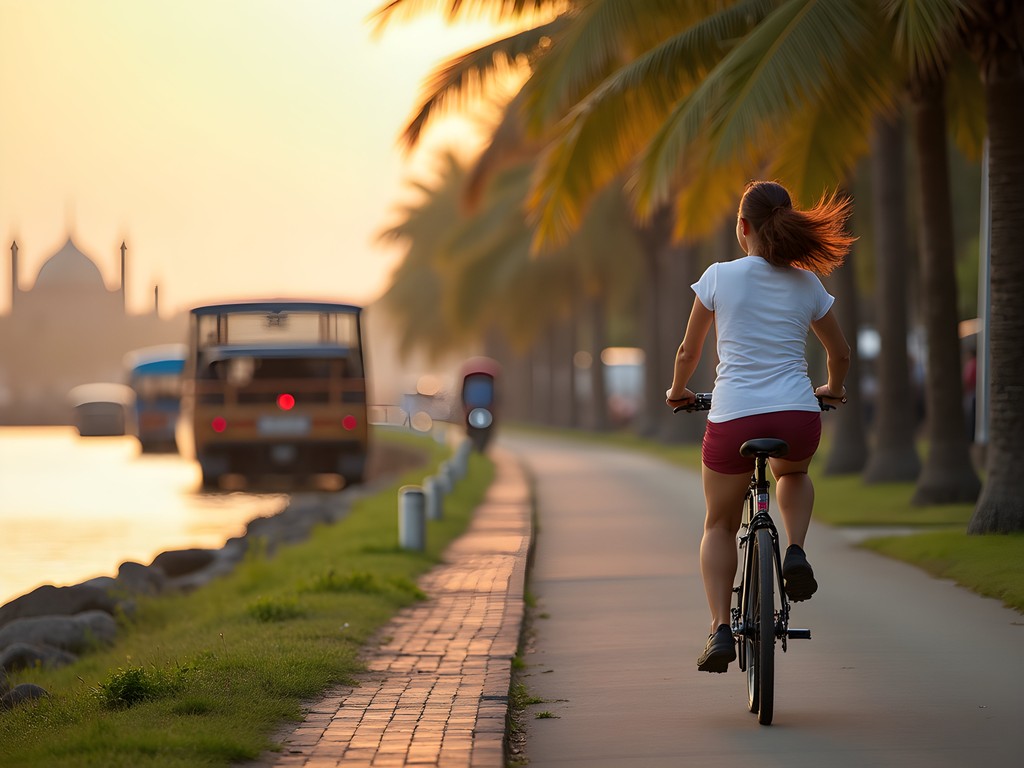
💡 Pro Tips
- Bring a reusable water bottle and stay hydrated – I recommend a insulated water bottle to keep water cool in the heat
- Wear sunscreen and a hat – Vientiane's sun can be intense even on cloudy days
- Always lock your bicycle, even for quick stops
Ride-Hailing Apps: Modern Solutions in an Ancient Capital
Even in Laos' sleepy capital, the digital revolution has arrived in the form of ride-hailing apps. When unexpected afternoon thunderstorms interrupted my cycling plans – a common occurrence during my visit in the rainy season – I turned to these modern solutions with great relief.
While Grab hasn't yet established a presence in Vientiane (unlike neighboring Thailand and Vietnam), local alternatives like LOCA and WeGo are gaining popularity. I downloaded LOCA on my first day and found it particularly useful for evening journeys when negotiating with tuk-tuk drivers felt less appealing. The app functions similarly to Uber, allowing you to set your pickup location and destination while showing the fare upfront – a welcome transparency that eliminates haggling.
To use these apps effectively, I relied on my portable wifi device, which provided consistent internet access throughout my stay. While my international data plan worked sporadically in Vientiane, having dedicated WiFi ensured I could summon rides whenever needed.
The LOCA app offers both tuk-tuks and cars, with the latter being slightly more expensive but offering air conditioning – a blessing during Vientiane's humid days. Most drivers speak limited English, but the app's interface bridges this gap by providing all necessary information to both parties.
One evening, after watching the sunset from That Luang temple, I found myself in a relative transportation desert with few tuk-tuks in sight. Opening LOCA, I secured a ride within minutes, with the driver navigating directly to my somewhat obscure location. This technological safety net provided peace of mind throughout my solo exploration of the city, especially in less touristed areas.

💡 Pro Tips
- Download ride-hailing apps before arriving in Laos
- Keep a portable charger handy as using GPS and ride apps can drain your battery quickly
- Screenshot your hotel address in both English and Lao script to show drivers if needed
Airport Transfers: Arriving and Departing with Ease
Wattay International Airport sits approximately 3km from downtown Vientiane – a relatively short distance that offers several transportation options. My arrival experience provided an immediate introduction to Laos' blend of traditional and modern approaches to transit.
The most straightforward option is the official airport shuttle, which costs 15,000 kip ($1.50) and drops passengers at the central bus station. From there, you'll need to arrange additional transportation to your final destination. I initially planned to take this option but found the schedule somewhat irregular.
Instead, I opted for a shared minivan service offered just outside the arrival hall for 30,000 kip ($3). This proved to be excellent value as it delivered me directly to my guesthouse door. The driver collected passengers until the van was comfortably full – not overcrowded as I'd experienced in some other Southeast Asian countries – before beginning the journey into town.
For my departure, I chose a different approach. My guesthouse arranged a tuk-tuk pickup for 60,000 kip ($6), which felt reasonable given the early hour and door-to-door service. The driver arrived precisely on time at 5:30 AM, a testament to Laotian reliability that contrasted with the otherwise relaxed pace of life.
One observation worth sharing: the airport road undergoes periodic construction, which can cause delays during peak hours. I recommend allowing an extra 30 minutes beyond the usual travel time if catching an international flight, especially during the morning rush hour between 7:30-8:30 AM when government workers commute to offices near the airport road.
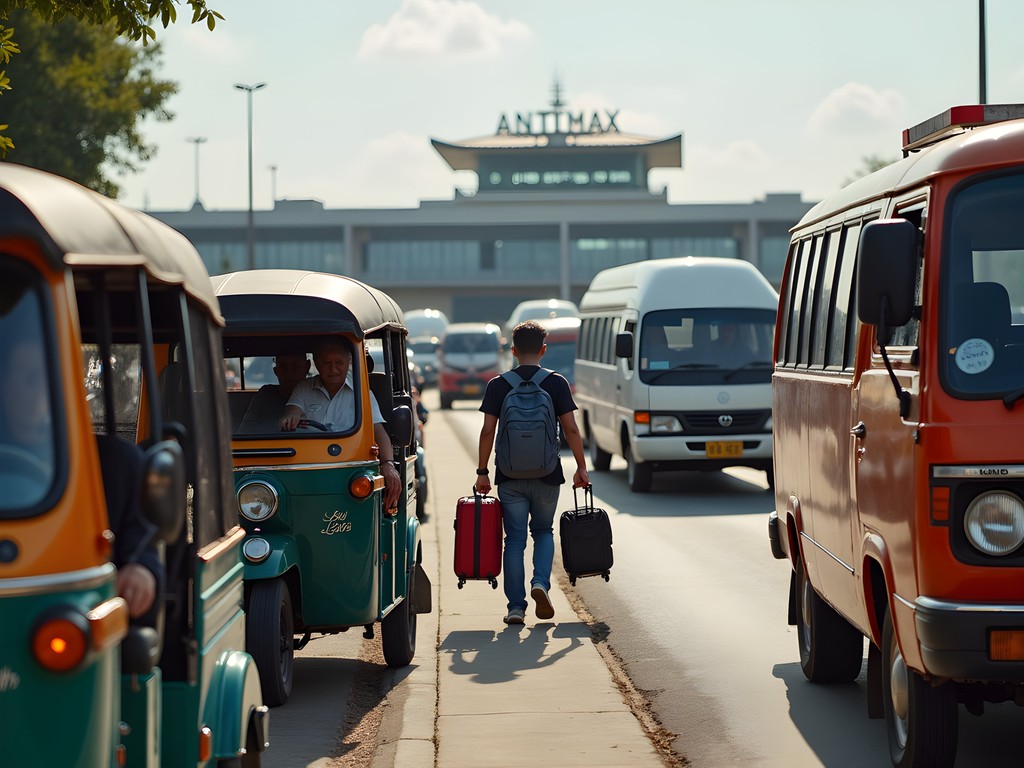
💡 Pro Tips
- Book your departure transfer the day before, especially for early morning flights
- Keep small denominations of kip for airport transportation as drivers rarely have change for large bills
- If arriving late at night, pre-arrange transportation as options become limited after 9 PM
Final Thoughts
Navigating Vientiane is less about following rigid transit maps and more about embracing the city's organic flow – much like how ancient astronomers learned to read the night sky through patient observation rather than printed guides. During my week exploring this charming capital, I found that each transportation mode offered a unique vantage point: tuk-tuks for quick A-to-B journeys, bicycles for immersive exploration, buses for authentic local experiences, and ride-hailing apps for convenience when needed. The city's manageable size means you can easily combine these options based on weather, energy levels, and destinations. As you plan your own Vientiane orbit, remember that the journey itself – whether pedaling along the Mekong or chatting with a tuk-tuk driver about local life – often becomes as meaningful as the destinations you're traveling between. Pack your sense of adventure, a bit of patience, and prepare to discover a transportation ecosystem that moves to the rhythm of Laos' uniquely laid-back heartbeat.
✨ Key Takeaways
- Negotiate tuk-tuk fares before starting your journey
- Bicycles offer the best value and most immersive experience for exploring the city center
- Download LOCA or WeGo ride-hailing apps as a backup option
- Allow extra time for airport transfers during rush hours
📋 Practical Information
Best Time to Visit
year-round (November-February offers cooler, drier weather)
Budget Estimate
$20-30 per day including accommodation and transportation
Recommended Duration
3-4 days
Difficulty Level
Easy

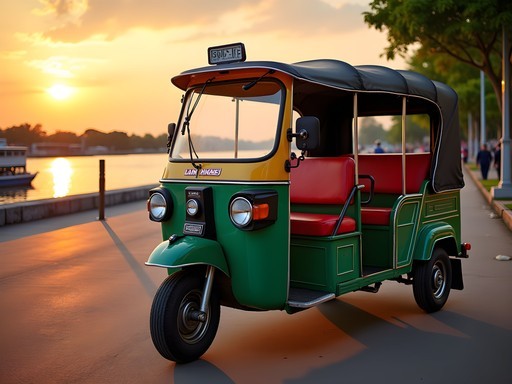
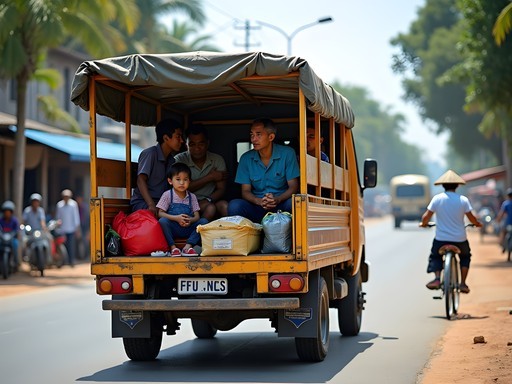

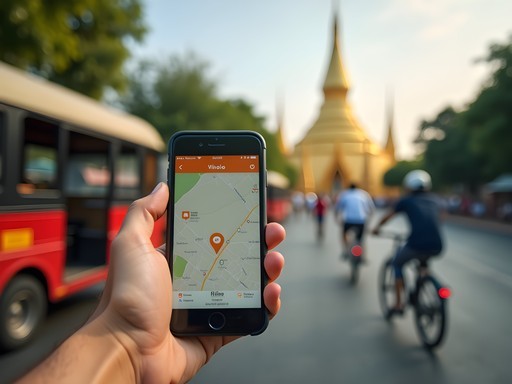
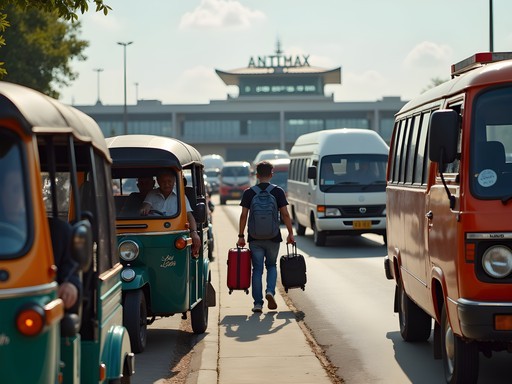








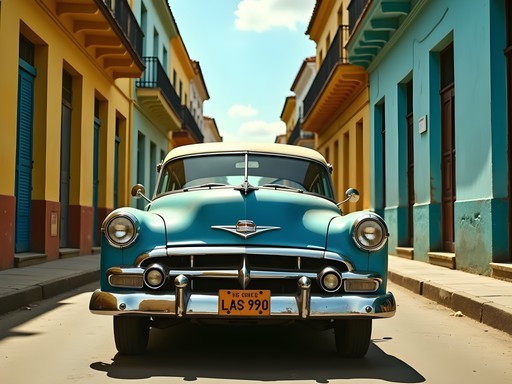

Comments
Claire Hawkins
This brought back memories! We visited Vientiane with our two kids (8 & 11) last year, and transportation was our biggest concern. We ended up using a mix of everything you mentioned. The kids LOVED the tuk-tuks - it was like a theme park ride for them. For longer distances, we hired a driver through our hotel which was surprisingly affordable for a family of four. The highlight was renting bicycles and riding along the Mekong - even my youngest managed it fine since the traffic is so much calmer than other Asian capitals. One warning to families though: the local buses get VERY crowded during rush hour, so plan accordingly if you're traveling with little ones!
photostar
Did you find any good family-friendly restaurants in Vientiane? Taking my kids there soon!
Claire Hawkins
Absolutely! Makphet was great - social enterprise restaurant with kid-friendly options. Also, the night market food stalls were a hit with our kids. They loved trying different skewers and sticky rice treats!
SoloSarah
Pro tip for anyone heading to Vientiane: negotiate tuk-tuk prices BEFORE getting in! I learned this the hard way 😅
FirstTimeLaos
Oof, same here! What's a good price from the airport to city center these days?
Chloe Flores
As of my last update, around 60,000-80,000 kip is fair for airport to center. Always have small bills ready!
Sophia Gomez
Fantastic guide, Chloe! I was in Vientiane for a business trip last year and found the transportation situation exactly as you described - initially confusing but ultimately charming. One thing I'd add is that for those staying longer than a few days, it's worth making friends with a particular tuk-tuk driver. I connected with a driver named Sith outside my hotel, saved his WhatsApp, and he became my reliable transport throughout my stay. He even took me to some local spots tourists rarely see! The personal connection made getting around so much easier, and I felt less like I was constantly negotiating. Also, for anyone worried about the heat when biking (which is otherwise perfect for exploring), try going early morning or late afternoon - the city has a completely different vibe during these hours anyway!
islandqueen
That's such a smart tip about befriending a driver! Will definitely try this approach.
redlife
Are the local buses easy to figure out for someone who doesn't speak Lao? Trying to travel on a tight budget.
coolgal2493
The buses are super cheap but honestly a bit confusing. We tried once but ended up in the wrong place lol. If you're on a budget, I'd say bicycles are your best bet for short trips, and negotiate hard with tuk-tuks for longer ones!
redlife
Thanks for the honest feedback! Maybe I'll stick to bikes then.
islandqueen
Love this! Saving for my trip next spring!
blueclimber
Great post! Bicycles FTW in Vientiane.
coolgal2493
Just got back from Vientiane last month and can confirm everything in this guide is spot on! The tuk-tuk drivers definitely tried to overcharge us at first but once we learned to negotiate confidently (and walk away if needed), we got fair prices. Pro tip: we used the GRAB app a lot which eliminated the bargaining hassle. Also rented bikes from our guesthouse for a day to explore the temples - best decision ever! The city is pretty flat and perfect for cycling. Just bring plenty of water because that Laos heat is no joke! I used my insulated water bottle constantly.
skygal
Great guide! How safe is it to bike around Vientiane? I'm planning a solo trip in November and wondering if I should rent one.
Sophia Gomez
I found biking in Vientiane surprisingly pleasant! The traffic is much calmer than other Southeast Asian capitals. Just stick to side streets when possible and be extra cautious at intersections. Great way to see the city at your own pace!
skygal
Thanks Sophia! That's reassuring. Will definitely give it a try then!
wildone9953
Just wanted to add my two cents about the local buses - they're actually pretty decent if you're not in a rush! I stayed in Vientiane for a month last year and got the hang of them after a few tries. The locals were super helpful pointing me in the right direction when I looked confused. I used my offline map to track the routes since Google Maps isn't very reliable for public transport there. Saved a ton of money compared to using tuk-tuks for everything!
Casey Andersson
Brilliant guide, Chloe! I was in Vientiane last year and found the transportation situation quite charming once I embraced the rhythm of it. My favorite memory was hiring a tuk-tuk driver for the entire day who ended up becoming our impromptu tour guide. He took us to his favorite noodle shop tucked away in a residential neighborhood - best khao piak sen I've ever had! One tip I'd add: if you're staying near the Mekong, the evening riverside promenade is perfectly walkable and magical at sunset. Skip the tuk-tuks altogether and enjoy the gentle pace on foot with a Beer Lao in hand. It's these unplanned moments that make Vientiane special.
Venture X
Premium card with 2X miles, $300 travel credit, Priority Pass